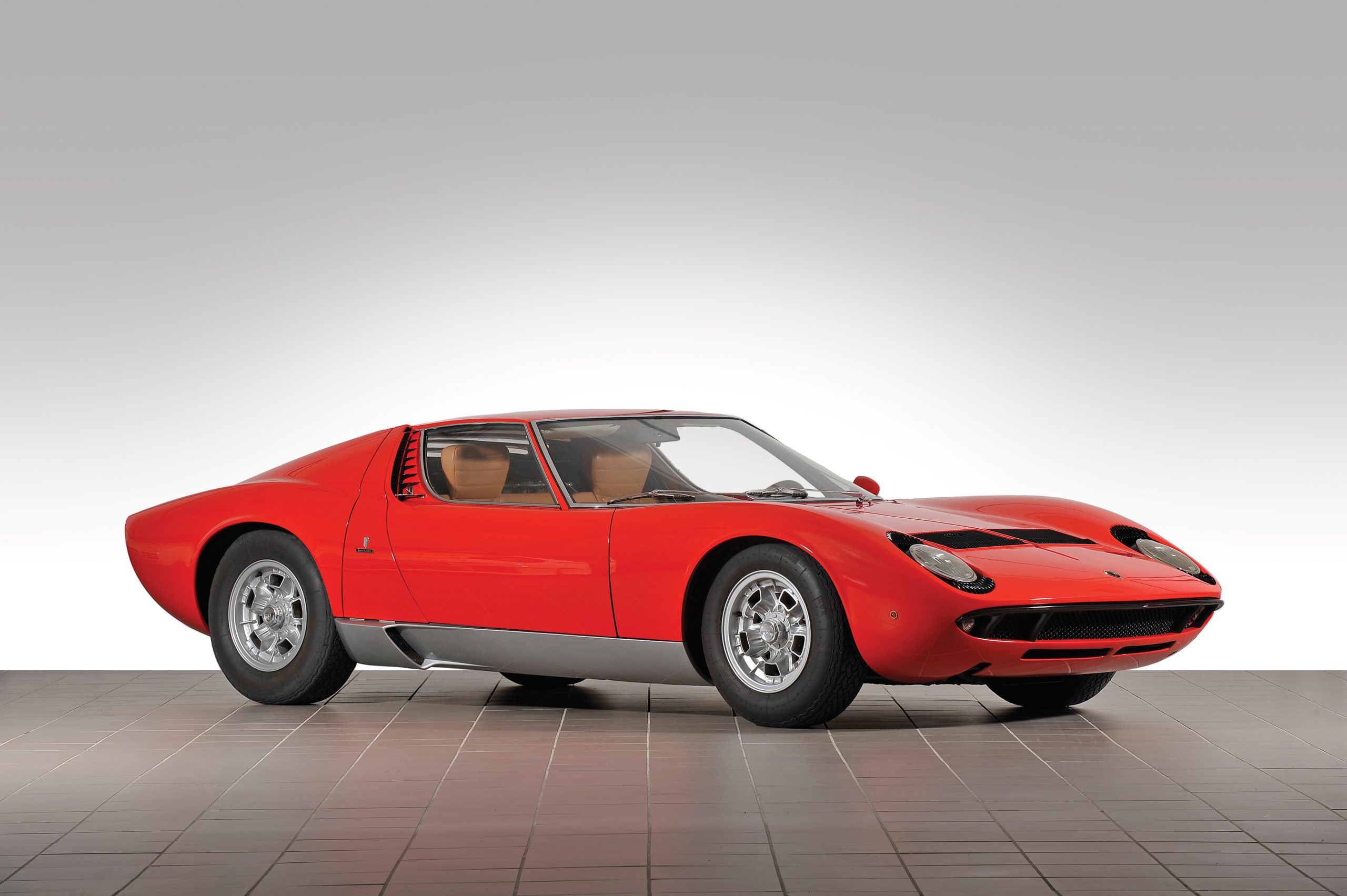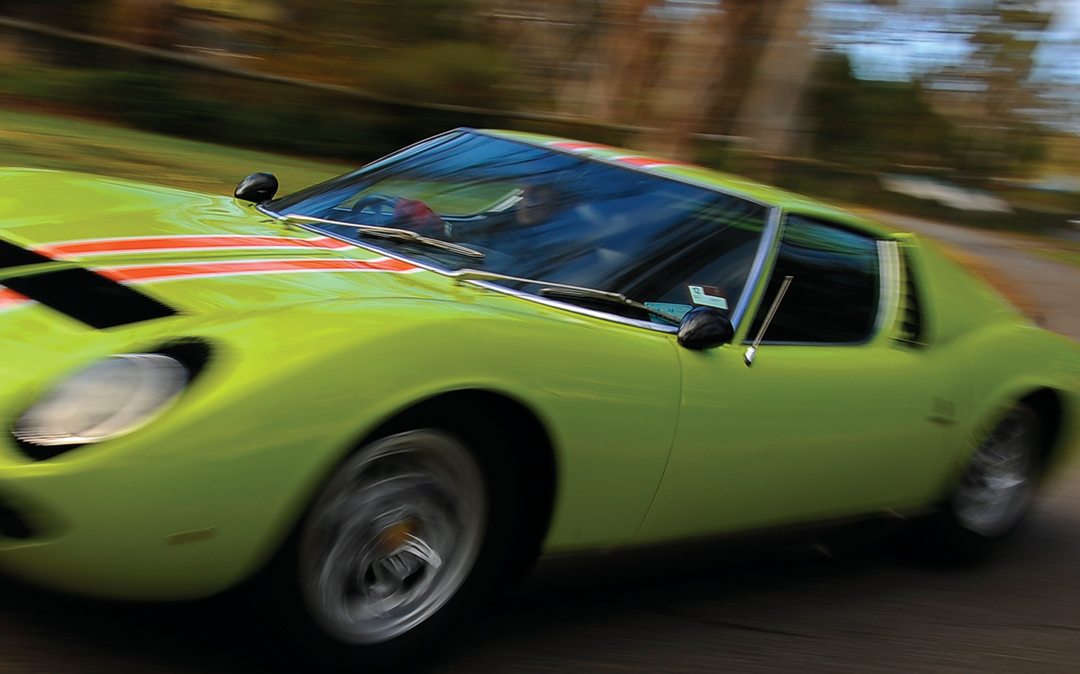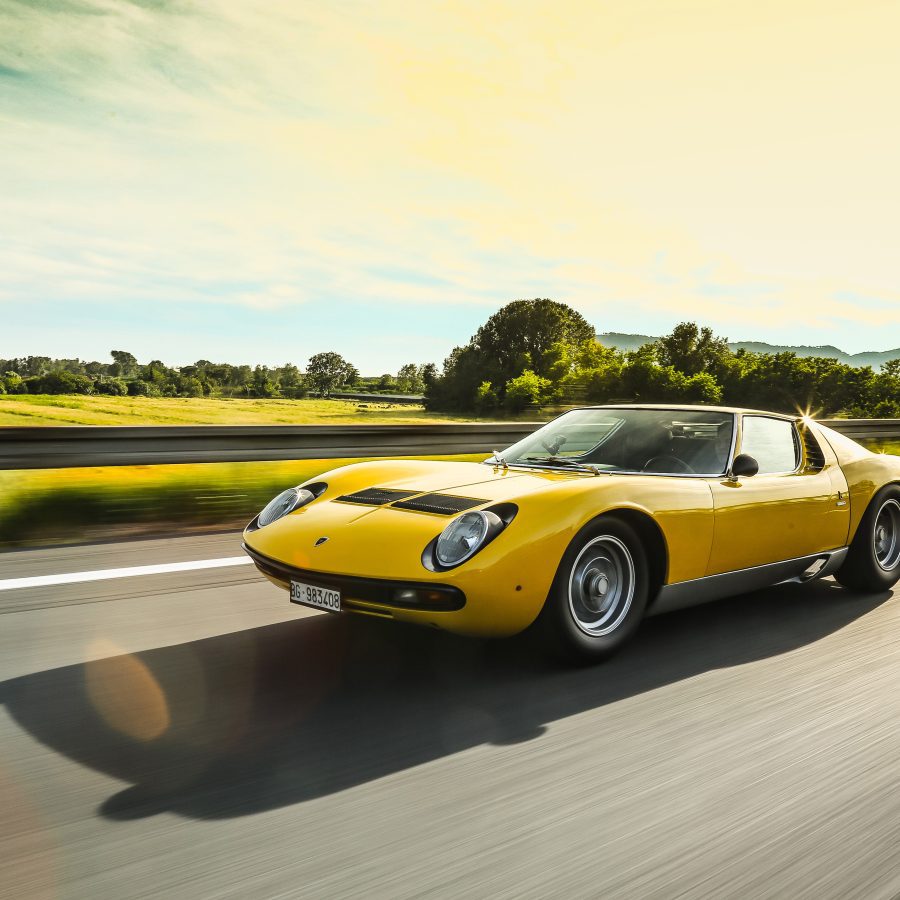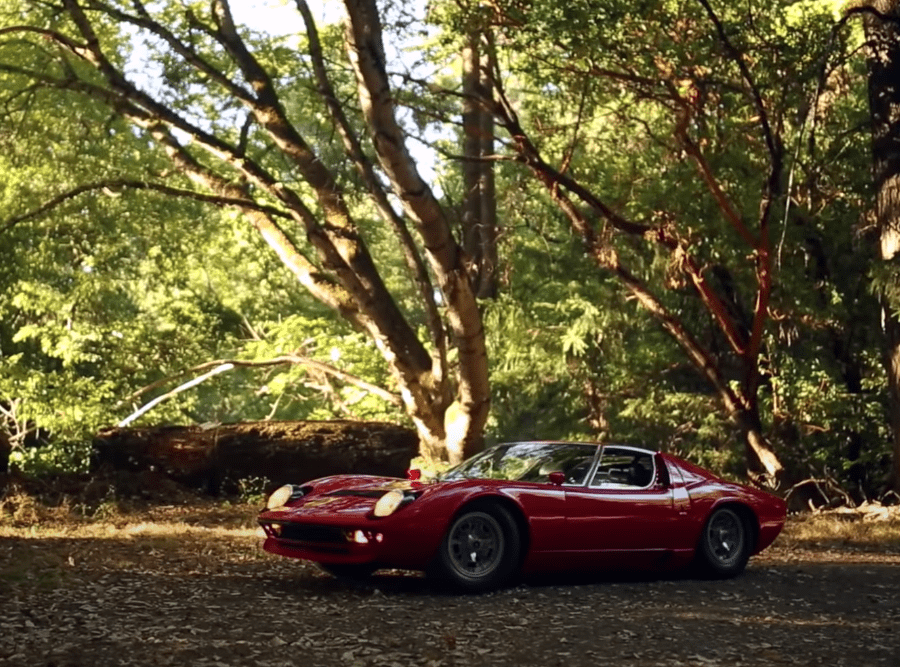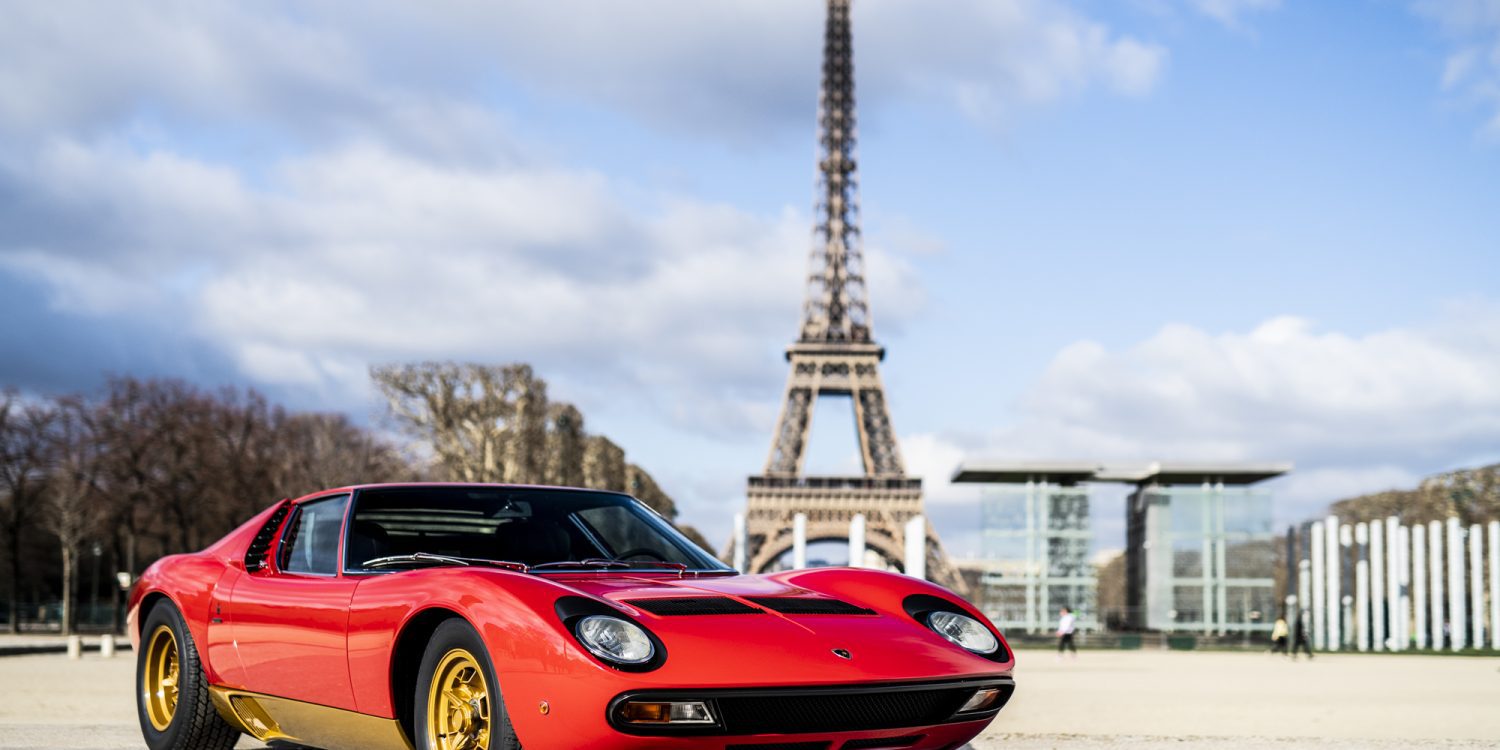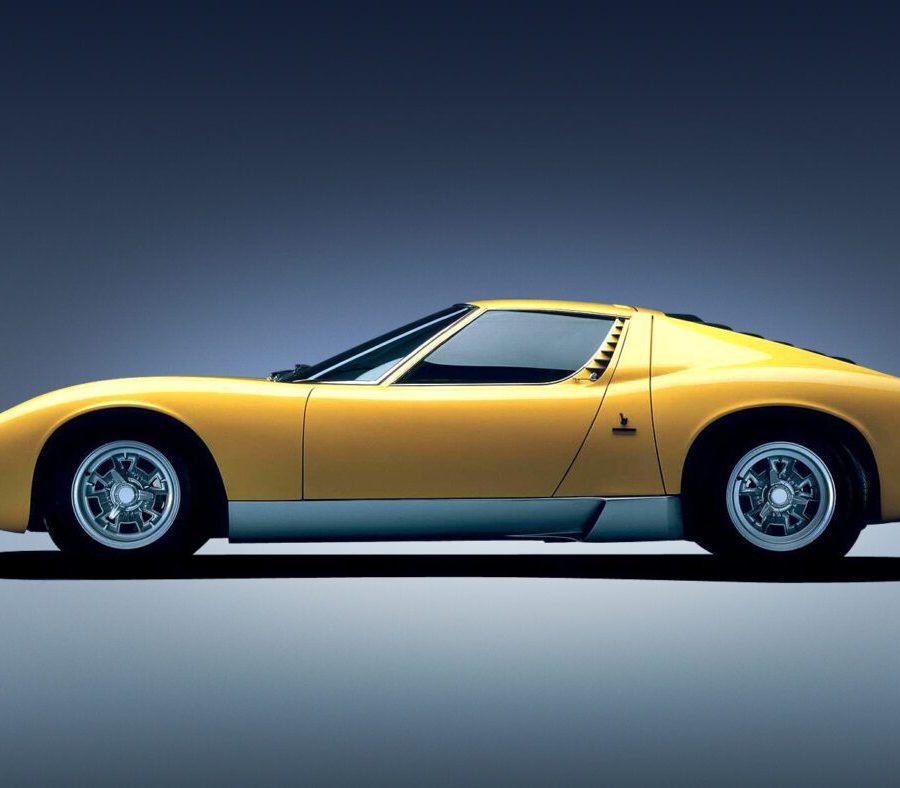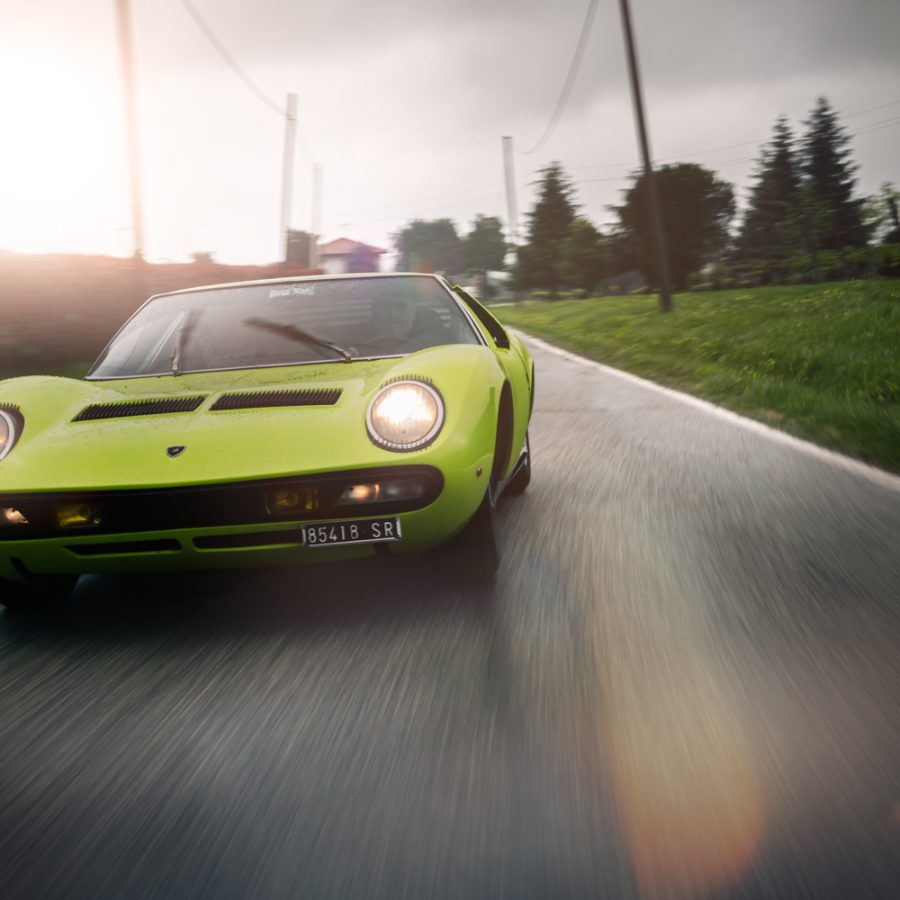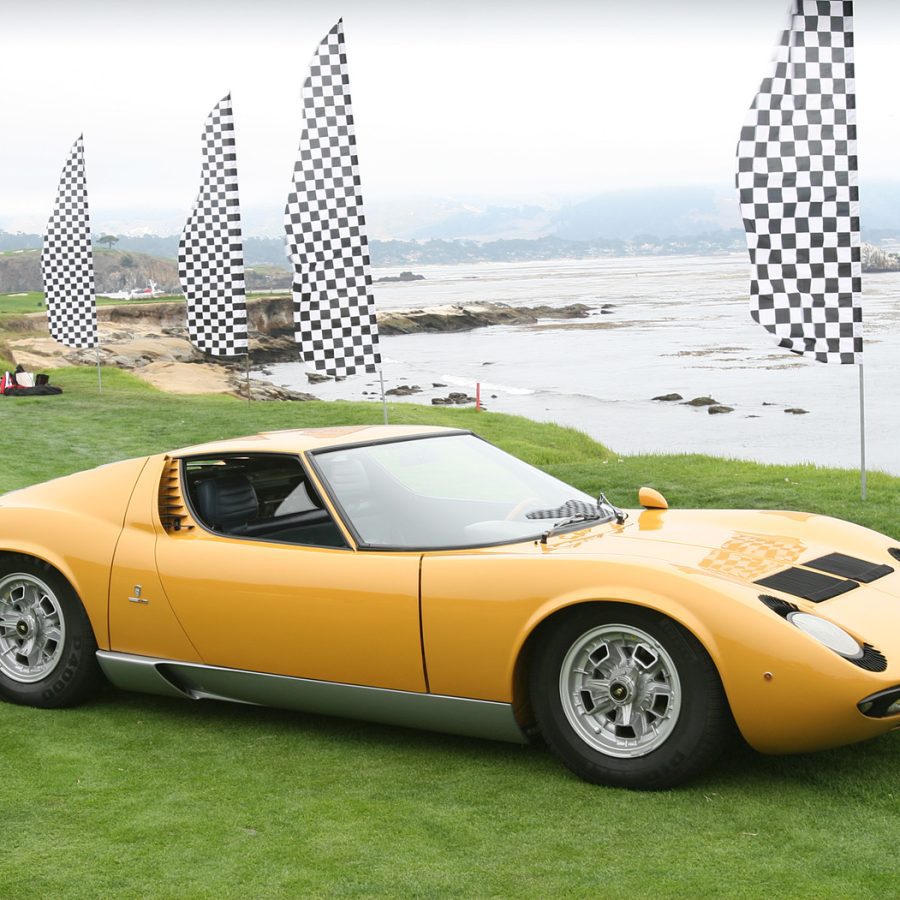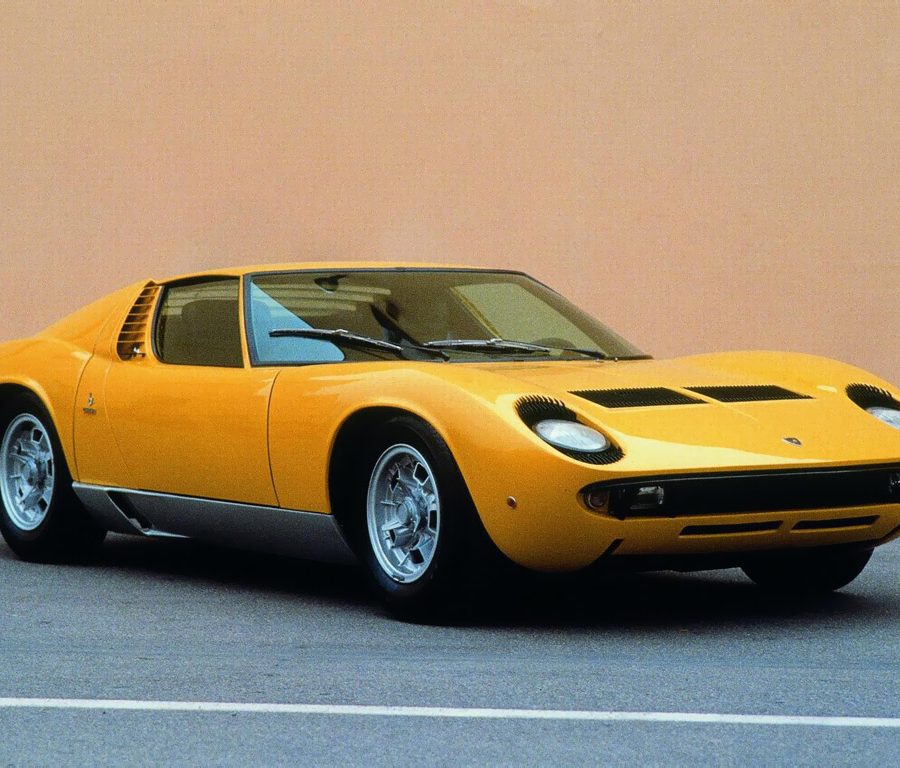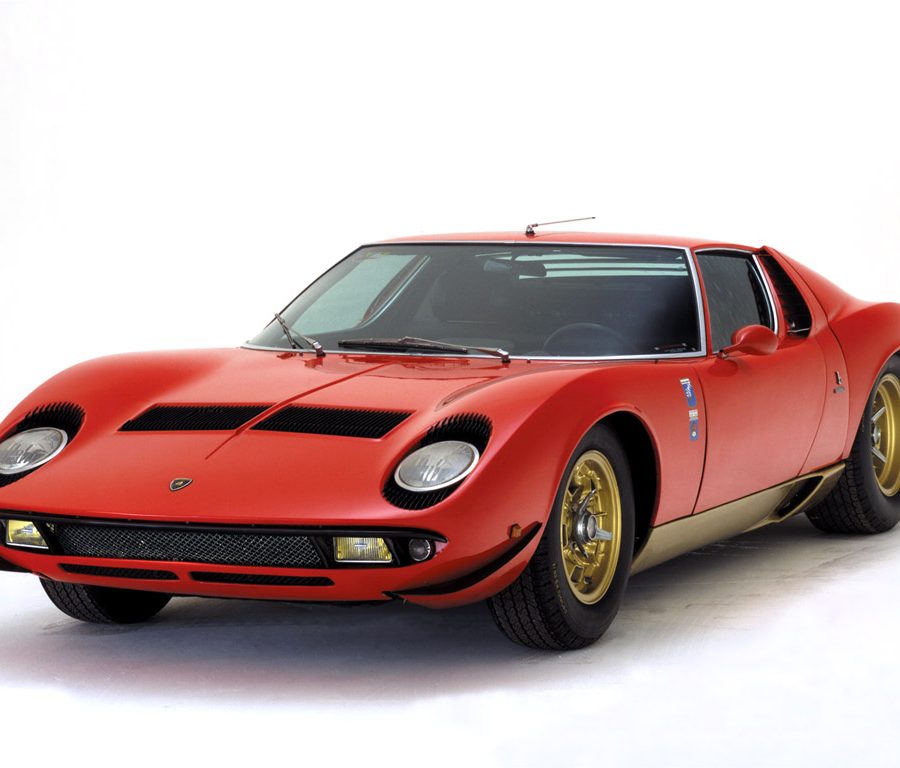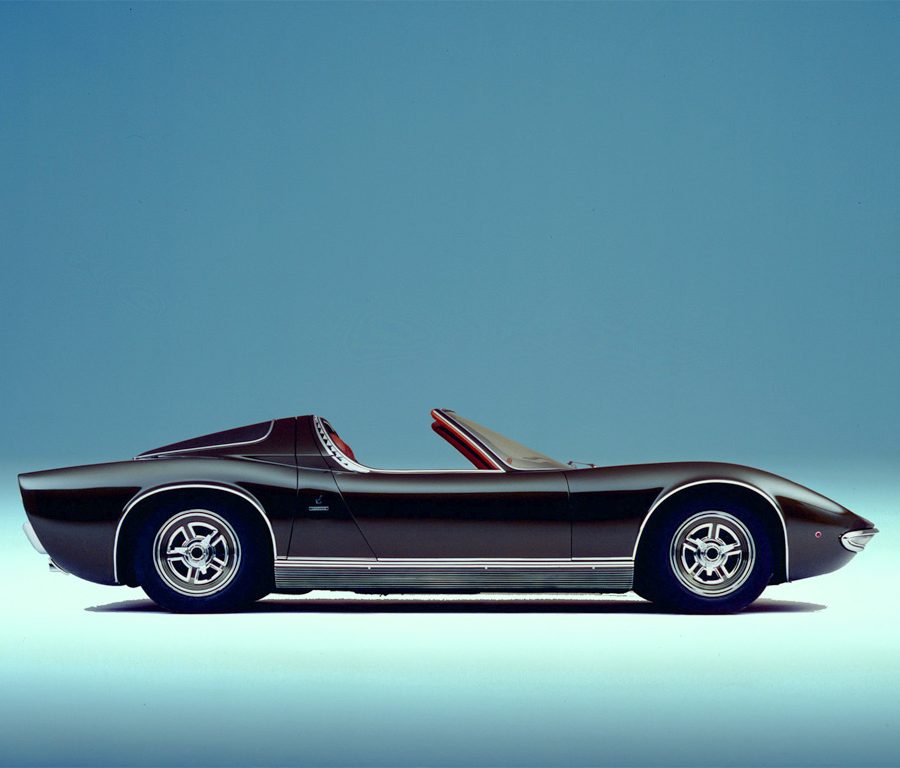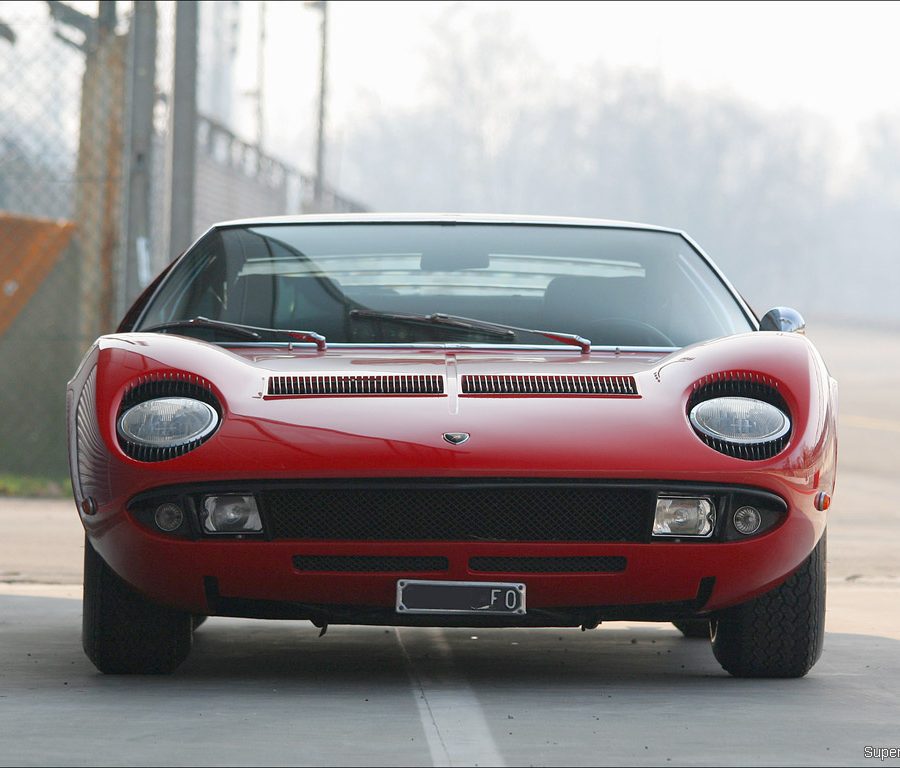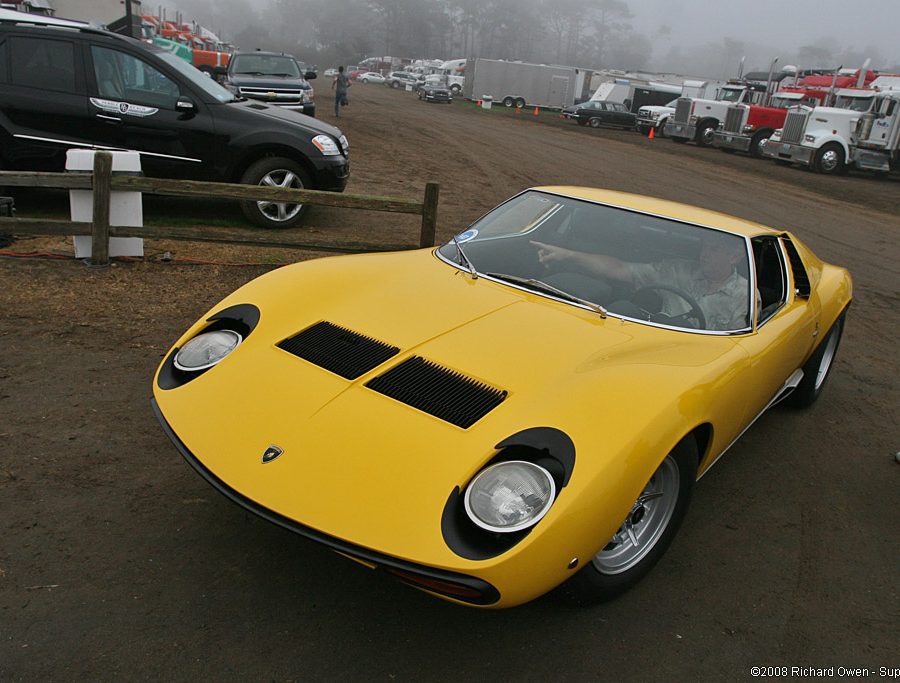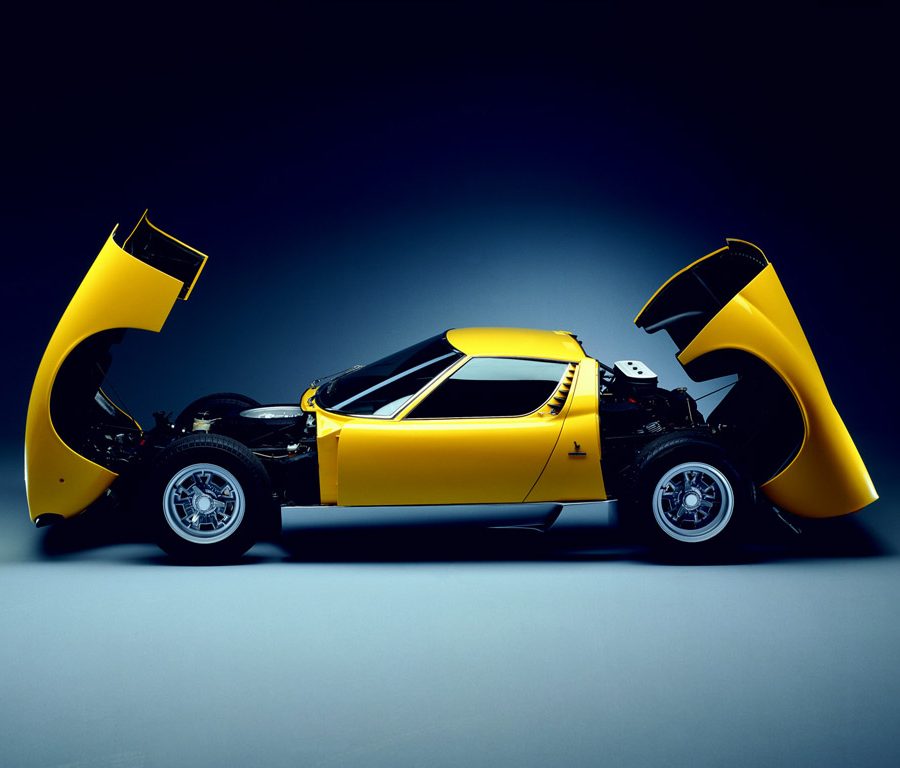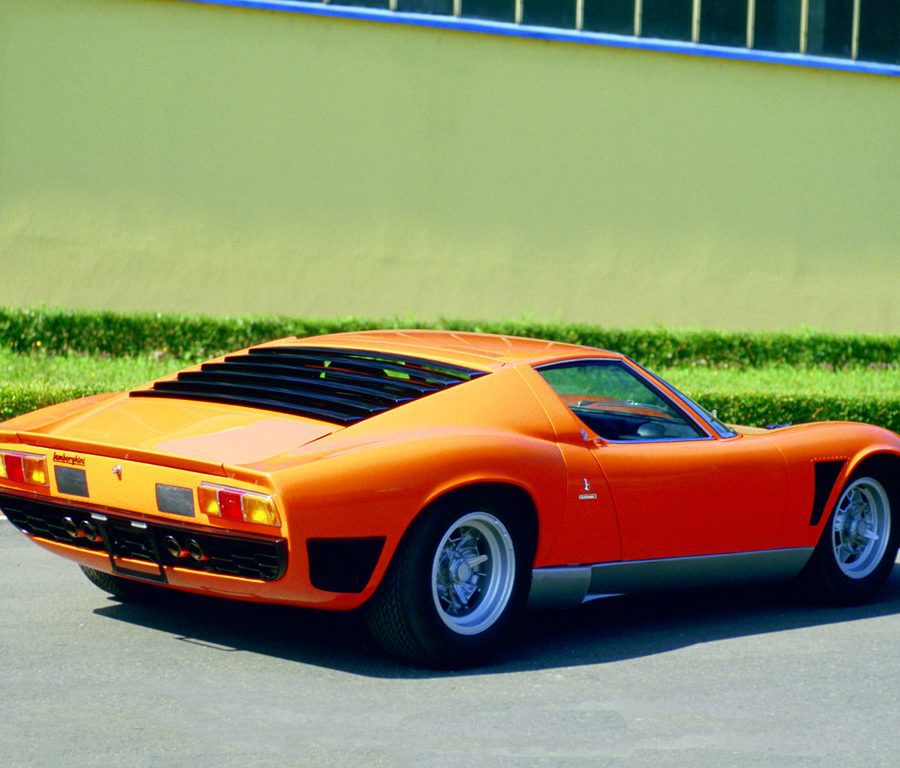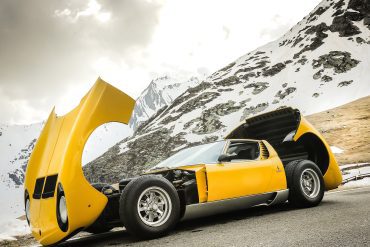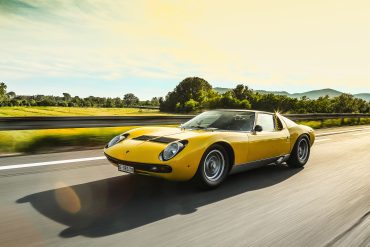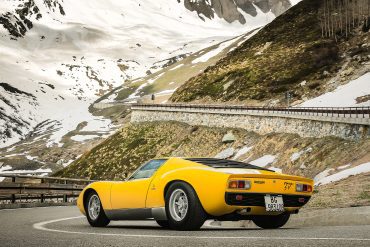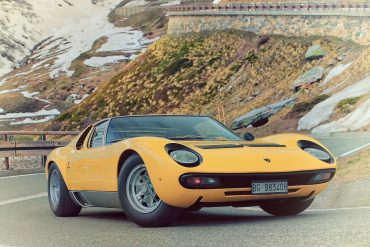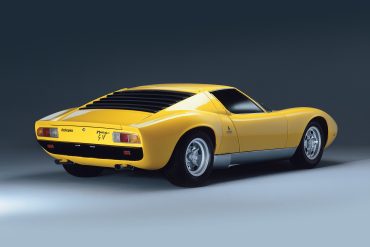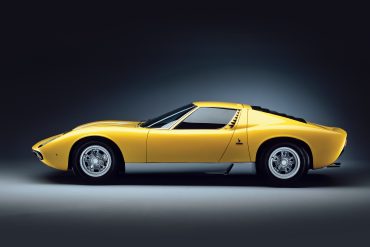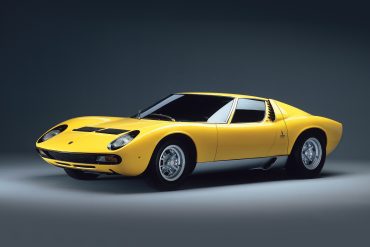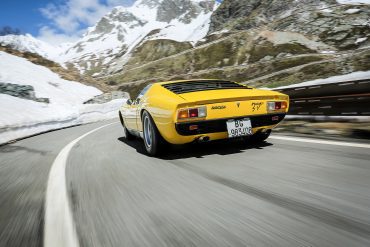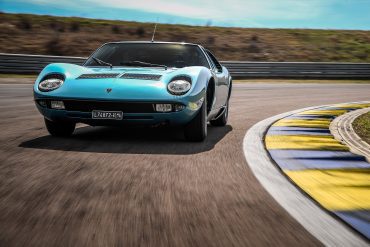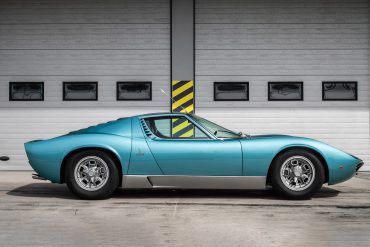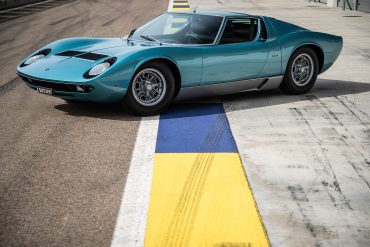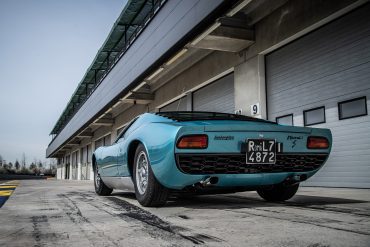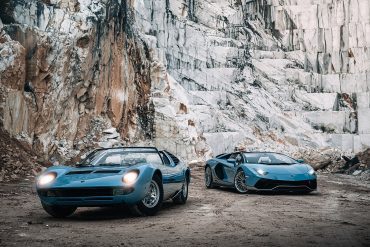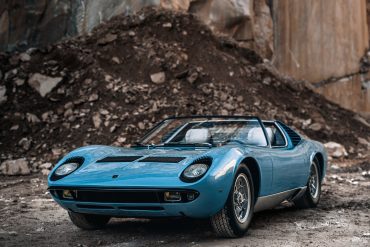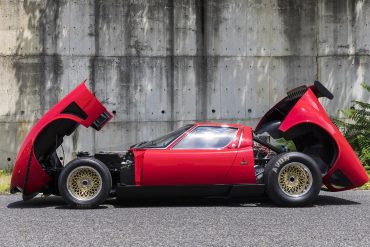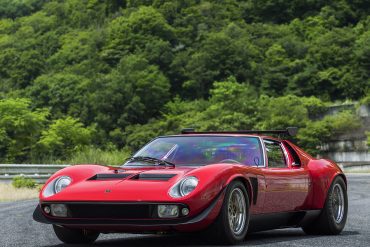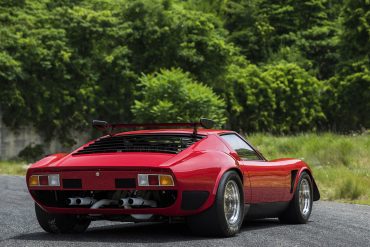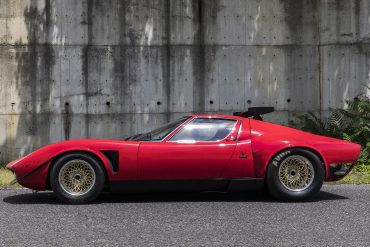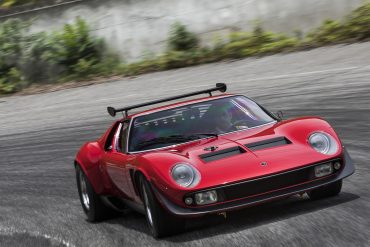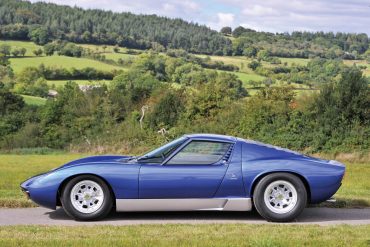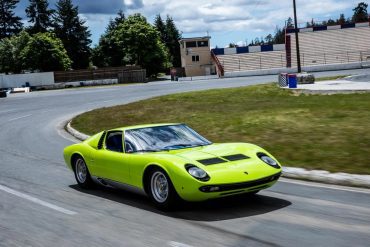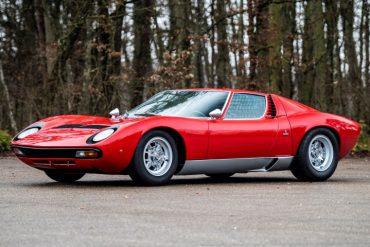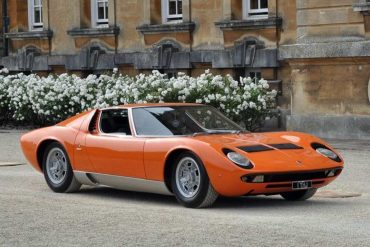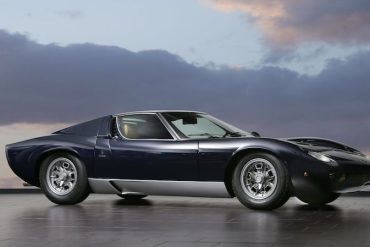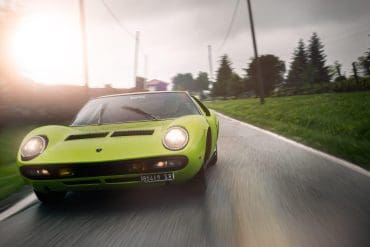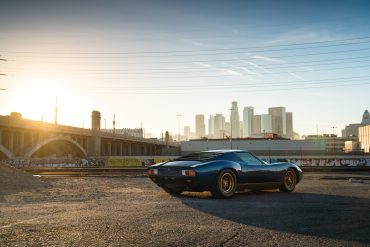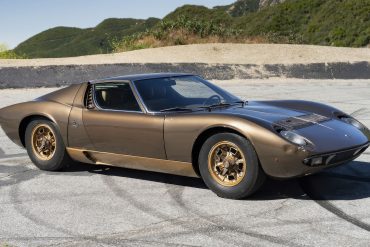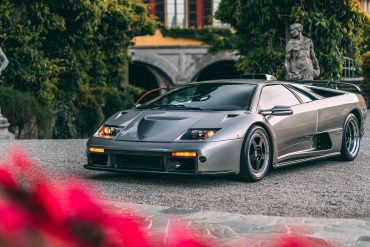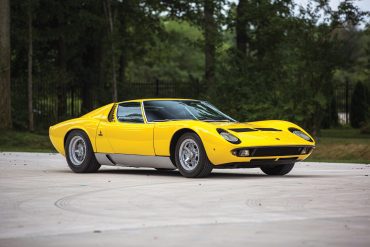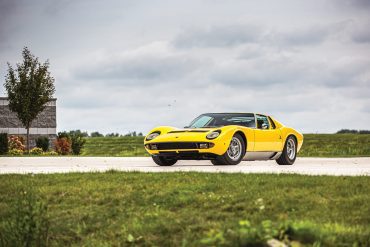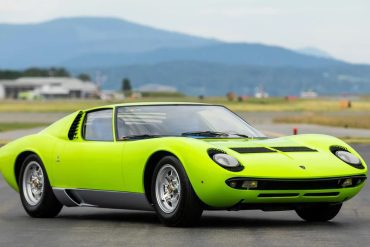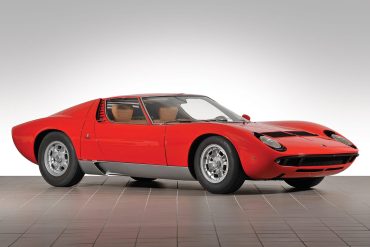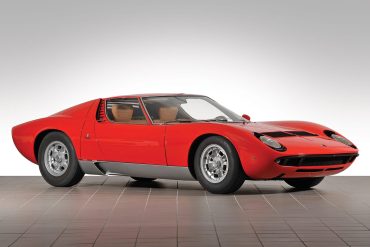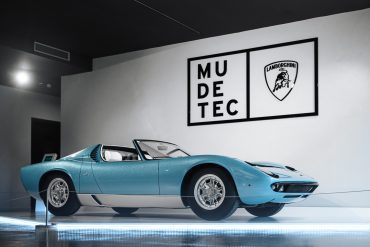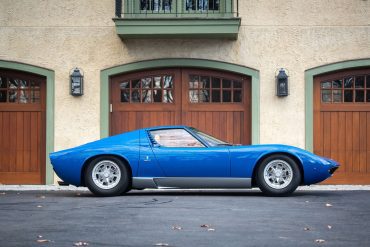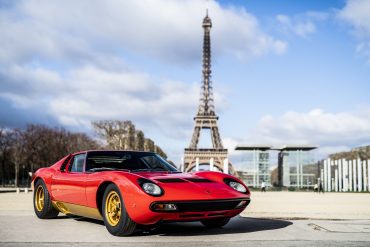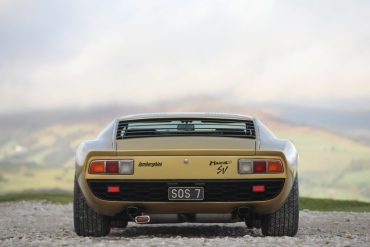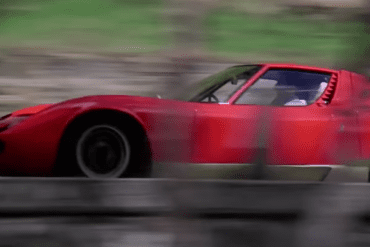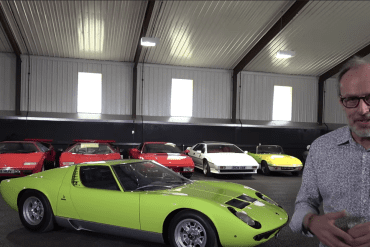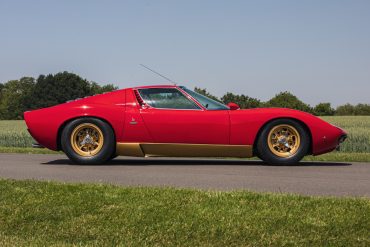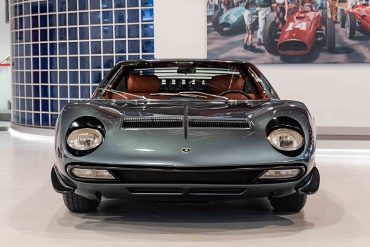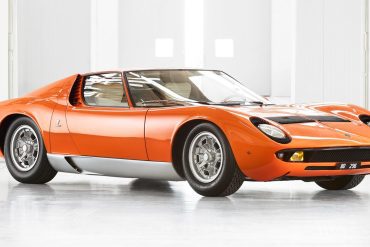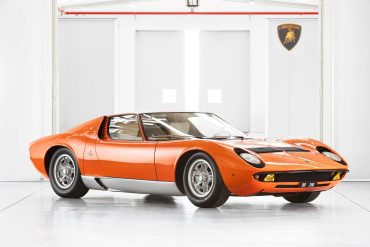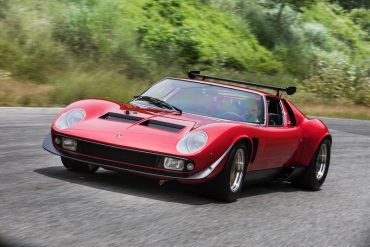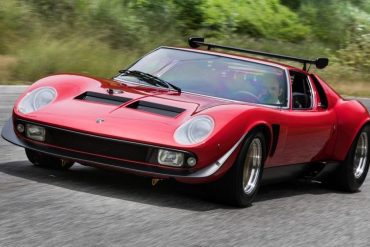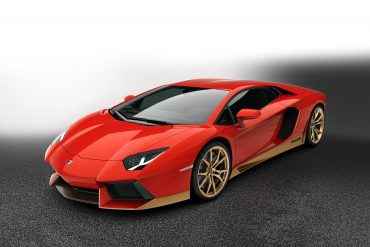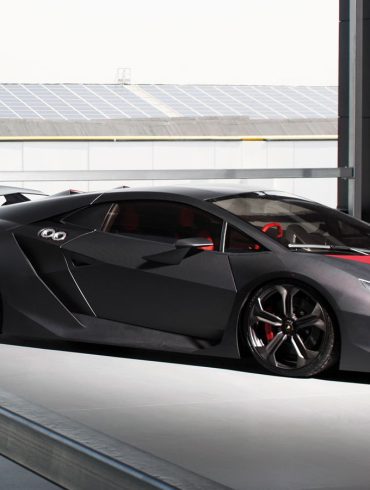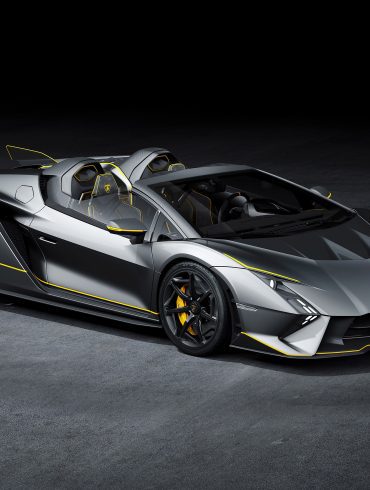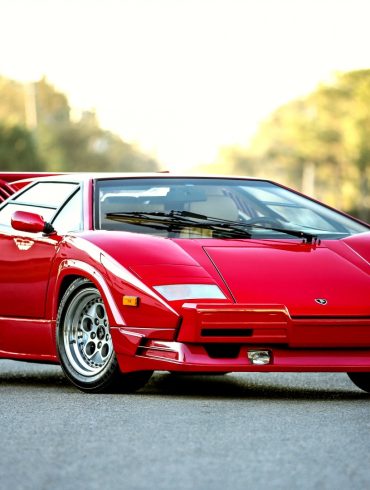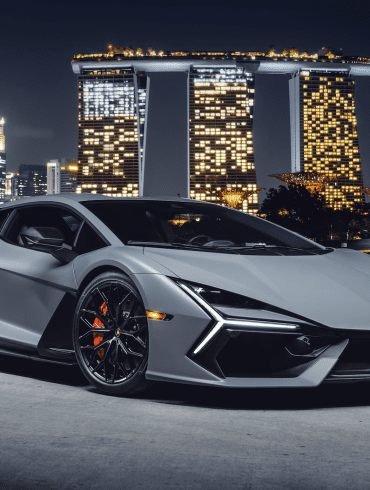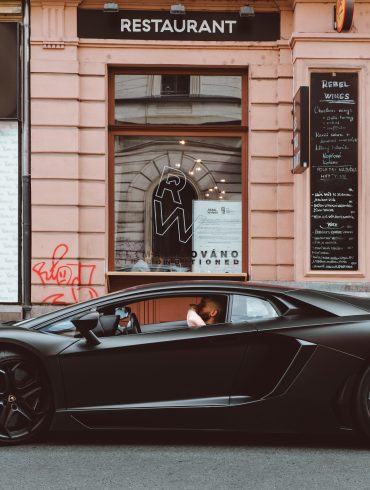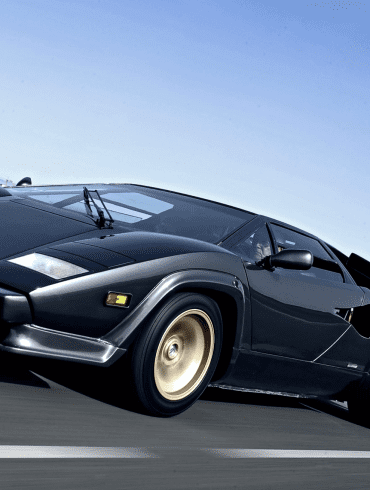Lamborghini Miura
The World's First Supercar
1966 - 1973
Lamborghini has produced its share of automotive icons, but few hold the legendary status of the Miura. Released in the mid-1960s, this stunning mid-engine marvel redefined what a sports car could be. Its combination of breathtaking beauty, ferocious power, and historical significance makes it a true icon.
Overview / Featured / The Story / Variants / Models In-Depth / Specs / Image Gallery / More Updates
Overview
In the pantheon of classic sports cars, the Lamborghini Miura holds a place of reverence, a masterpiece that not only redefined what a sports car could be but also established Lamborghini as a marquee synonymous with the pinnacle of automotive design and engineering. Unveiled in 1966, the Miura was nothing short of revolutionary, a dazzling blend of speed, style, and raw power that captured the imagination of car enthusiasts around the world.
The Birth of an Icon
The genesis of the Miura can be traced back to the mid-1960s, a period when Lamborghini was more associated with grand touring cars than with the high-performance sports cars. The idea for the Miura came from three young engineers at Lamborghini, Gian Paolo Dallara, Paolo Stanzani, and Bob Wallace, who worked on the project in their spare time, envisioning a car that would outperform anything from Ferrari or Maserati.
The Miura's design was revolutionary, featuring a mid-engine layout that was unheard of at the time for a road car. This configuration, where the engine is mounted behind the driver but in front of the rear axle, offered superior weight distribution, which significantly enhanced handling and performance. The car was powered by a 4.0-liter V12 engine, which delivered an astonishing 350 horsepower, enabling it to reach speeds that were almost unheard of for road cars at the time.
A Design Masterpiece
Perhaps the most striking aspect of the Miura was its breathtaking design, penned by the legendary Marcello Gandini at Bertone. The car's sleek, aerodynamic lines, distinctive "eyelash" headlamps, and mid-engine layout gave it a futuristic appearance, while its scissor doors became a signature Lamborghini feature, emulated in many of its subsequent models. The Miura's design was not just about aesthetics; it was integral to its aerodynamic efficiency, helping it slice through the air with minimal resistance.
The interior of the Miura was equally impressive, reflecting the luxury and sophistication expected of an Italian supercar. It was a blend of comfort and sportiness, with leather upholstery, a state-of-the-art instrument panel, and a design that was both elegant and driver-focused.
Legacy and Impact
The impact of the Miura on the automotive world was profound. It set new standards for performance and design, and its mid-engine layout became the standard for high-performance sports cars. The Miura was more than just a fast car; it was a statement, a symbol of technological prowess, and artistic beauty, a car that could turn heads as easily at high speeds as it could standing still.
Today, the Lamborghini Miura is revered as one of the most beautiful and influential cars ever made. It's not just a classic car; it's a piece of automotive history, a testament to the ingenuity, passion, and vision of its creators.
Lamborghini Miura Basics
Manufacturer: Lamborghini
Production Yrs: 1966 - 1973
Production Units: 764 units
Assembly: Sant'Agata, Italy
Layout: Transverse rear mid-engine, rear-wheel-drive
Engine: 3.9L V12
Original price: US$20k (1966)
Did You Know?
The team behind the Miura were incredibly young. The designers, including Marcello Gandini, were in their twenties, bringing fresh and daring ideas to the project.
The Miura revolutionized sports cars with its transversely mounted mid-engine layout – basically putting a massive V12 sideways behind the driver.
“When I miss the sound and the fury, I take refuge in my garage and turn the key in the ignition of my Miura…”
Ferruccio Lamborghini
The Story. Lamborghini Miura History & Evolution

Only three years after the first Lamborghini prototype appeared at the 1963 Turin Motor Show, Miura number 1 was parked on the Place du Casino during the 1966 Monaco F1 week. The car shared its name with the fierce fighting bulls from Seville and it was completely different from anything Ferrari had on offer. Ferruccio said “the Miura is for the keenest sporting driver who wants the ultimate in looks and performance.”1 It caused a stir that weekend and had to be one of Ferruccio Lamborghini’s best moments.
efore the Miura, Ferruccio had established himself as a successful industrialist and decided to take on Ferrari with a series of high-quality grand tourers known as the 350 GT and 400 GT. These laid foundations for the Miura, such as the V12 engine designed by ex-Ferrari engineer Giotto Bizzarrini to have as much available horsepower as possible. Initially, this high-revving, 3.5-liter V12 produced a maximum output of 360 bhp at 9800 rpm and was enlarged on the SV to 3929cc for a reported 385 bhp. For the Miura, it was formed from a single aluminum casting that combined the cylinder blocks, crankcase and transmission.
Gian Paolo Dallara and assistant Paolo Stanzani designed the unique steel tub chassis that placed Bizzarrini’s V12 engine directly behind the driver in a transverse position. They were inspired by both the Lola GT, a race car developed by Eric Broadley that lent its chassis tub design to the Ford GT; and the Austin Mini with its transverse engine that had a common crankcase for the engine and transmission. The final design was first presented as a bare chassis at the 1965 Turin Motor Show where everyone could admire its radical layout and only imagine what the final product would look like.
Although the Miura chassis design could be mistakenly interpreted as a race chassis, Ferruccio had a strict no-racing attitude. He wrote a policy in the company’s bylaws that prohibited racing and avoided the pitfalls of expensive development by trying to intercept Ford vs Ferrari at Le Mans. Instead, the Miura was destined to be a road car of the highest order.
At the Turin show, design of the Miura’s body was still up for grabs and at the end of the show Ferruccio gave Nuccio Bertone the job as he was well suited for series production at Carrozzeria Bertone SpA. Initial sketches were laid out by Giorgetto Guigiario who thought he was designing a new Bizzarrini. When he left the firm, Marcello Gandini finished the work which included a lower nose that repositioned the front radiator. Bertone then sent Gandini on vacation while he finalized the design himself before submitting to Lamborghini. Due to these three talented men, the Miura didn’t have a wrong line anywhere. Later, Carrozzeria Bertone became responsible for manufacturing the Miura bodies and interiors on chassis produced by Marchersi. Final installation of the engine, transmission and suspension were completed at Lamborghini’s factory in Santa’Agata Bolognese.
The first completed prototype was painted orange and personally driven by Bertone to the 1966 Geneva Motor Show where it became the highlight of the event and overshadowed the debuting Ferrari 330GTC. Furthermore, with a press release proclaiming 198 mph, everyone in Maranello took notice. A later trip down to Monte Carlo for the F1 weekend was another resounding success.
Initially, orders exceeded production and Lamborghini had to only worry about manufacturing. Several pre-production prototypes were built and tested which varied only slightly to the final production specification. Over time, upgrades and small details were changed, but a huge update called the SV was planned in 1971 starting with chassis 4758. The main focus of the SV was a new rear suspension that made the car much wider. Longer wishbones were fitted that added 1.5 inches of length. Furthermore, larger Campagnolo cast magnesium wheels were added with wider Pirelli Cintaurato tires. Many of these changes were undertaken by chief test driver Bob Wallace in conjunction with Claudio Zampolli and greatly improved handling of the Miura.
The result was a much more aggressive car that emphasized the Miura’s rear-engine power. Options such as Borletti air conditioning were also offered for the first time and fitted as standard on cars shipped to America. Only 30 cars were fitted with this essential option.
In the end, the Miura SV was a remarkable performer. Lamborghini’s own specification listed a horsepower of 380 bhp and a top speed of 180 mph but these were probably exaggerated figures compared to any regular production model. In fact, only around 350 bhp was produced from a standard SV engine and the top speed is actually slower than the P400S model due to the larger tires.
Eventually the oil crisis and lack of demand halted Miura production in 1973 after nearly 150 cars were completed. By this time, development emphasis had been placed on the Countach which the public first saw in 1971. In April of 1972 Ferruccio sold off his controlling shares of the Lamborghini, probably because he achieved everything he had set out to do with the Miura.
Lamborghini Miura Variants
Very few cars managed to change the automobile world like the Miura. It was the first true supercar. It had a radical specification in relation to common engineering of the time. The Miura was endowed with a quad-cam V12 that sat transverse and behind the drivers. Immediately, everything from Ferrari to Aston Martin looked outdated by comparison upon release. It redefined the concept of a sports car. Below we dive into the details on the variants made by Lamborghini.
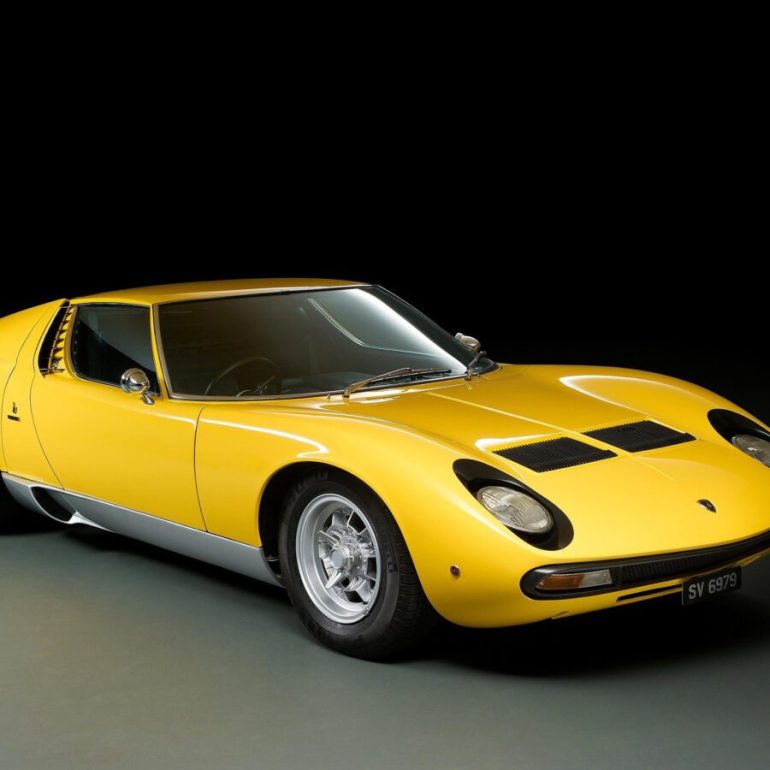
Lamborghini Miura P400
Years: 1966 – 1969
Units: 275 units
Engine: 3.9 L Nat Aspirated V12
Power: 350 hp @ 7,000 rpm
Torque: 300 lb-ft @ 5,500 rpm
0-60 mph: 6.3 seconds
Top Speed: 163 mph
The first supercar definitely stood out in looks, tech and performance. The Miura was the fastest production car in the world with a top speed of 163 mph and 0 to 60 mph in 6.3 seconds. Unlike almost anything on the road, the Miura was endowed with a quad-cam V12, that sat transverse and behind the drivers. Immediately, everything from Ferrari to Aston Martin looked outdated by comparison upon release. The Bizzarrini-designed quad-cam 3929cc V12 was carried over from 400GT. Output increased from 320hp to 350hp thanks to increased compression ratio and the upright positioning of carburetors. This overwhelmed Ferrari 275GTB by as much as 50 horsepower. It easily became the fastest car in the world.
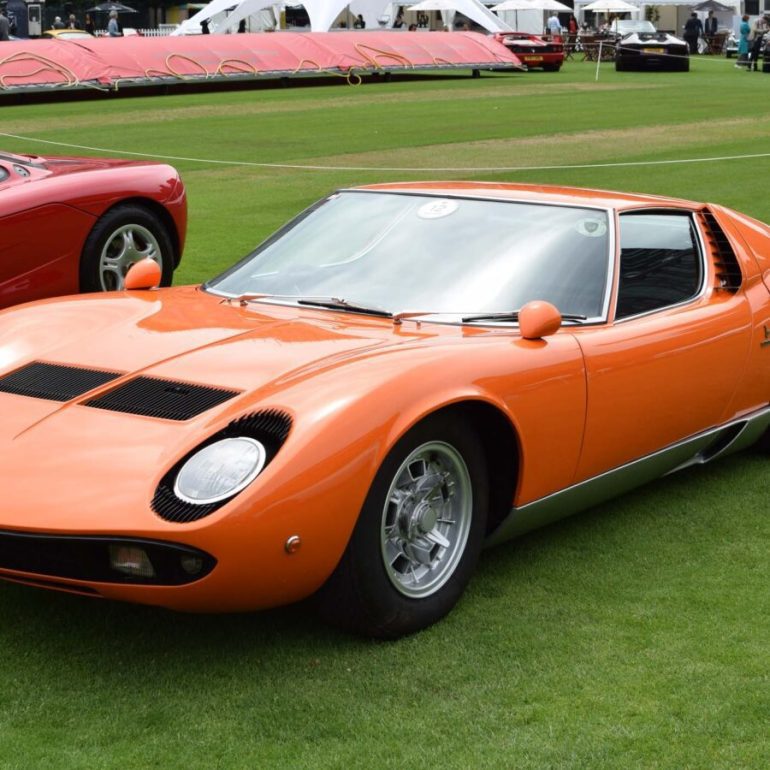
Lamborghini Miura P400 S
Years: 1968 – 1971
Units: 338 units
Engine: 3.9 L Nat Aspirated V12
Power: 370 hp @ 7,500 rpm
Torque: 287 lb-ft @ 5,500 rpm
0-60 mph: 5.5 seconds
Top Speed: 168 mph
The second generation Miura was released at the 1968 Turin Motor Show with a number of detail upgrades both in and out of the car. It shared the same potent transverse V12 engine and Bertine-designed body from it’s predecessor released three years earlier. Inside Lamborghini fitted power windows to the Miura S and also offered optional air conditioning for the first time. Detail differences included a locking glove box. The engine also received an overhaul which was good for 20 additional horsepower. This included new intake manifolds and different camshafts. Outside, the car received a new chrome trim piece around the window locking strip. Around 140 cars of this type were produced until the SV replaced the model in March of 1971.
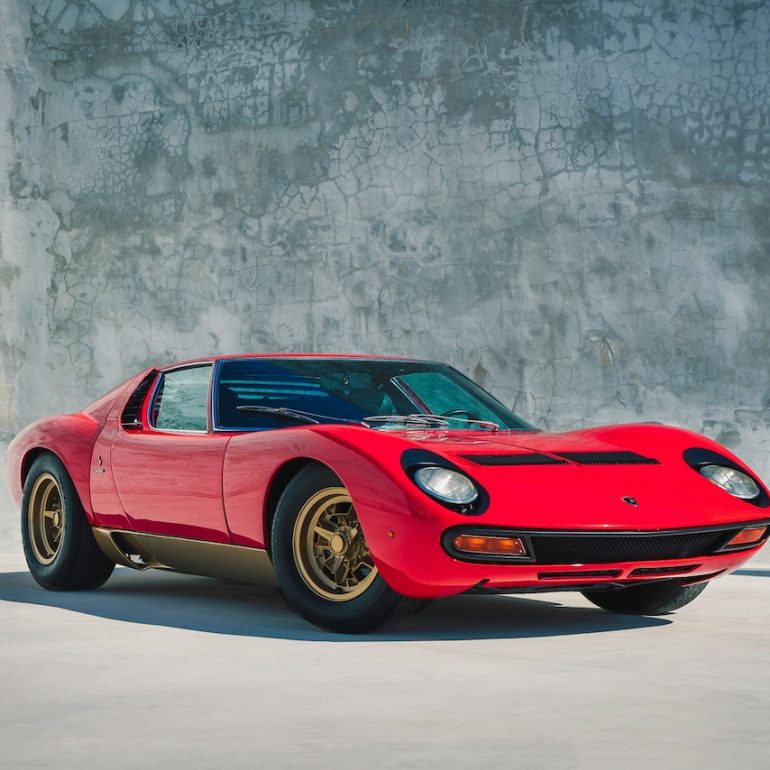
Lamborghini Miura SV
Years: 1971 - 1973
Units: 150 units
Engine: 3.9 L Nat Aspirated V12
Power: 350 hp @ 7,000 rpm
Torque: 272 lb-ft @ 5,750 rpm
0-60 mph: 6.6 seconds
Top Speed: 174 mph
Over time, upgrades and small details were changed, but a huge update called the SV was planned in 1971 starting with chassis 4758. The main focus of the SV was a new rear suspension that made the car much wider. Longer wishbones were fitted that added 1.5 inches of length. Furthermore, larger Campagnolo cast magnesium wheels were added with wider Pirelli Cintaurato tires. Many of these changes were undertaken and greatly improved handling of the Miura.
To accommodate the new setup, the first SV chassis was sent to Bertone so Gandini could redesign the wider rear bodywork, but other features such as smooth headlight surrounds, Fiat Dino Spyder rear lights and better integrated front signals were added.
Lamborghini Miura Special Editions
There were several special edition and prototype Miura cars built over the years.
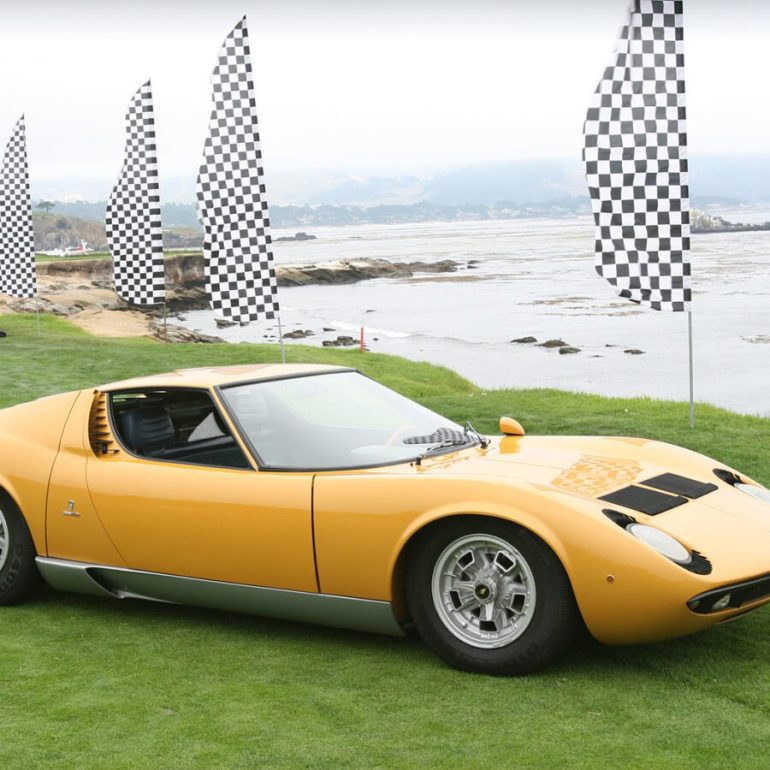
Lamborghini Miura Prototipo
Years: 1966 – 1967
Units: 1
Engine: 3.9 L Nat Aspirated V12
Power: 350 hp @ 7,000 rpm
Torque: 300 lb-ft @ 5,500 rpm
0-60 mph: 6.3 seconds
Top Speed: 163 mph
Before the first production Miura was completed on April 20th of 1967, Lamborghini produced five developmental prototypes which were used for testing and as show cars. A total of five prototypes were built in 1966 and 1967 which progressed towards the final production specification. These cars were chassis 0502, 0862, 0706, 0961 and 0979. The first one appeared at the 1966 Geneva Motor Show as the Miura P400 GT, also known as the Sperimentale. The first three of the prototypes featured counter-clockwise crankshaft rotation which later turned clockwise with car number four with the addition of an idler gear.
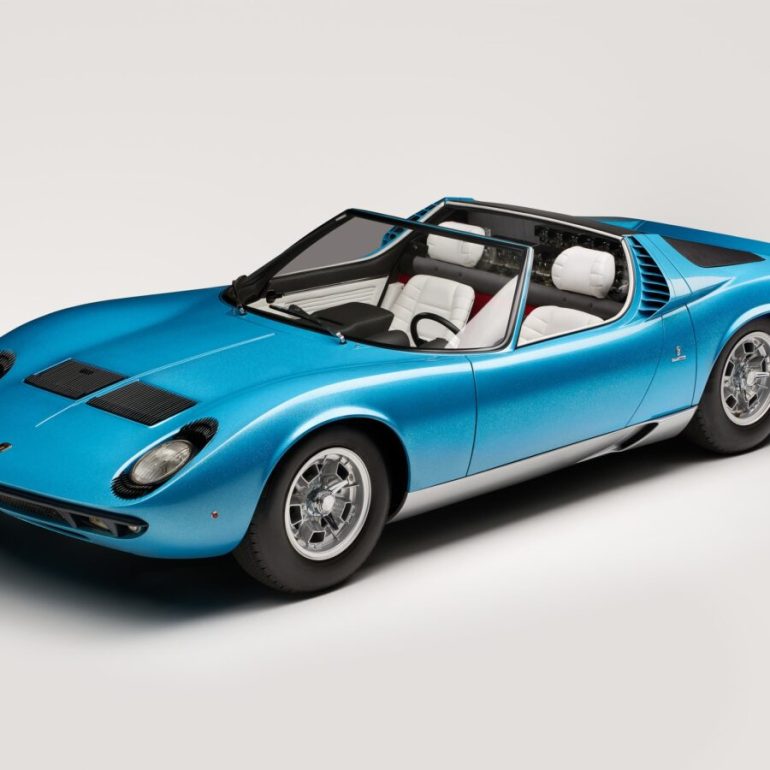
Lamborghini Miura Roadster
Years: 1968
Units: 1
Engine: 3.9 L Nat Aspirated V12
Power: 350 hp @ 7,000 rpm
Torque: 272 lb-ft @ 5,750 rpm
0-60 mph: 6.6 seconds
Top Speed: 174 mph
There was only one factory built Roadster and it was created in 1968 by Marcello Gandini and Bertone for the Geneva Show. Ot featured larger air intakes, lower roll-over hoop, different taillights and a larger spoiler. It was more than just a chop job, it was dramatically different from production Miuras. As released at the show, the Roadster featured larger air intakes and a lower roll-over hoop which distinguished it from any other Miura. Other modifications included different taillights and a larger spoiler. As needed, the box section structure of the chassis was strengthened up to cope with additional loads usually absorbed by the roof.
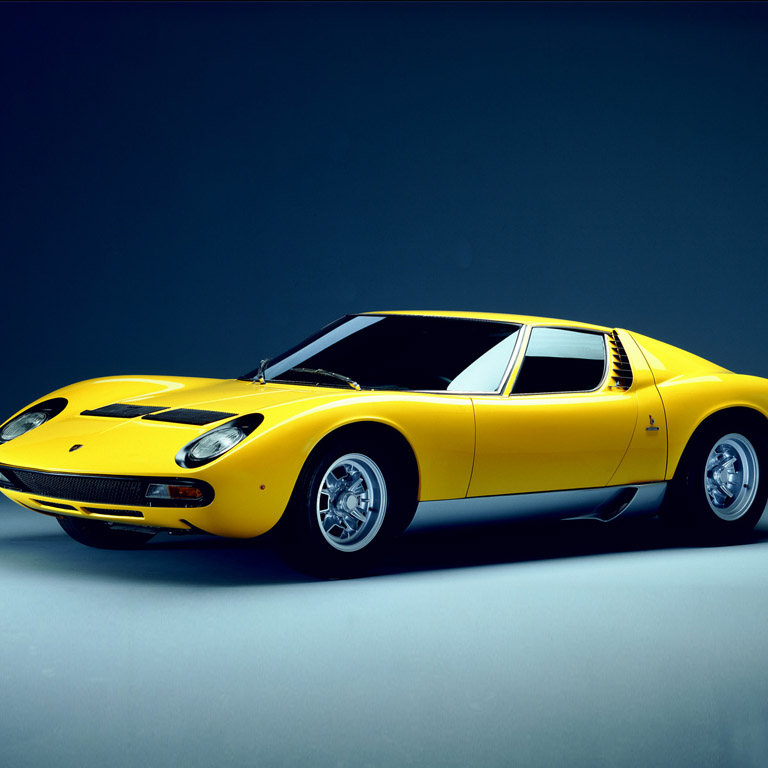
Lamborghini Miura SV Prototipo
Years: 1971
Units: 1
Engine: 3.9 L Nat Aspirated V12
Power: 385 hp @ 7,850 rpm
Torque: 295 lb-ft @ 5,750 rpm
0-60 mph: 5.75 seconds
Top Speed: 170 mph
Over time, upgrades and small details were changed on the Miura, but a huge update called the SV was planned in 1971 starting with development chassis 4758. The main focus of the SV was a new rear suspension that made the car much wider. Longer wishbones were fitted that added 1.5 inches of length. Furthermore, larger Campagnolo cast magnesium wheels were added with wider Pirelli Cintaurato tires. Many of these changes were undertaken by chief test driver Bob Wallace in conjunction with Claudio Zampolli and greatly improved handling of the Miura. The prototype is the first car to feature many of the SV upgrades that later typified the model.
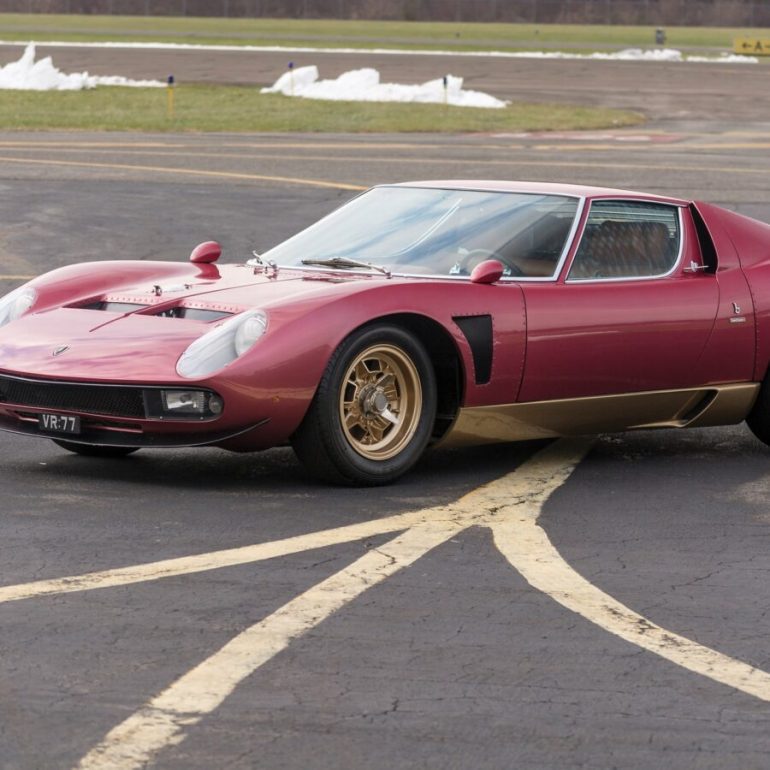
Lamborghini Miura SVJ
Years: 1971 – 1975
Units: 6
Engine: 3.9 L Nat Aspirated V12
Power: 440 hp @ 8,500 rpm
Torque: 296 lb-ft @ 6,500 rpm
0-60 mph: 3.6 seconds
Top Speed: N/A
As if the Miura wasn’t already radical enough, Lamborghini let test driver Bob Wallace make an experimental version that was even better. Prepared as a quasi-racecar, it had no compromises to comfort. Known internally as ‘Miura Privata’ by the factory, the project was later named Jota to potential customers. Unfortunately the original Jota was lost in the crash, but the factory fitted some Jota modifications to several road cars and these became known as the SVJ. There are six examples of the Miura SV/J known to be built by the factory while the Miura was still in production, one was built new (chassis #5090) and five were converted from existing SVs (chassis #4934, #4860, #4892, #4990 & #5084). Rare and special.
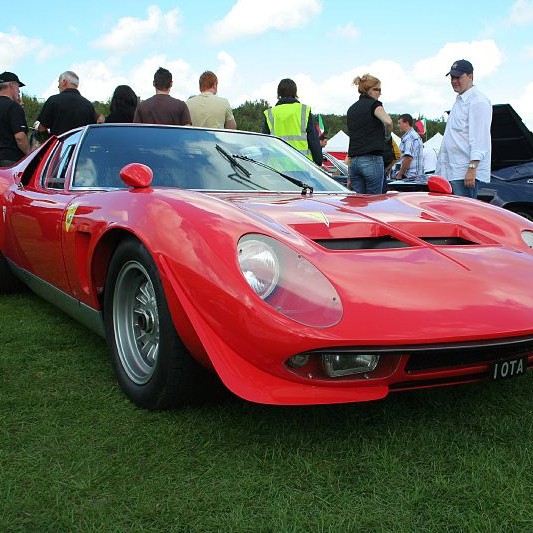
Lamborghini P400 Jota
Years: 1970
Units: 1
Engine: 3.9 L Nat Aspirated V12
Power: 440 hp @ 8,500 rpm
Torque: 296 lb-ft @ 6,500 rpm
0-60 mph: 3.6 seconds
Top Speed: N/A
Only one original Miura Jota was ever made, and it was Bob Wallace’s personal test car built around chassis #5084. He used it to test various ideas that would prepare the Miura for the track and improve overall performance. Having plenty of time on his hands, the Jota became evermore radical to the point were it eclipsed standard Miura performance by several degrees. The main focus of Bob’s modifications was to decrease and balance weight. This meant the car had a completely stripped interior, single window wiper, Plexiglas windows and fixed headlights. Most of weight savings came from the use of a light-gauge aluminum alloy called Avional which was used for the new body, floor pan and front spoiler.
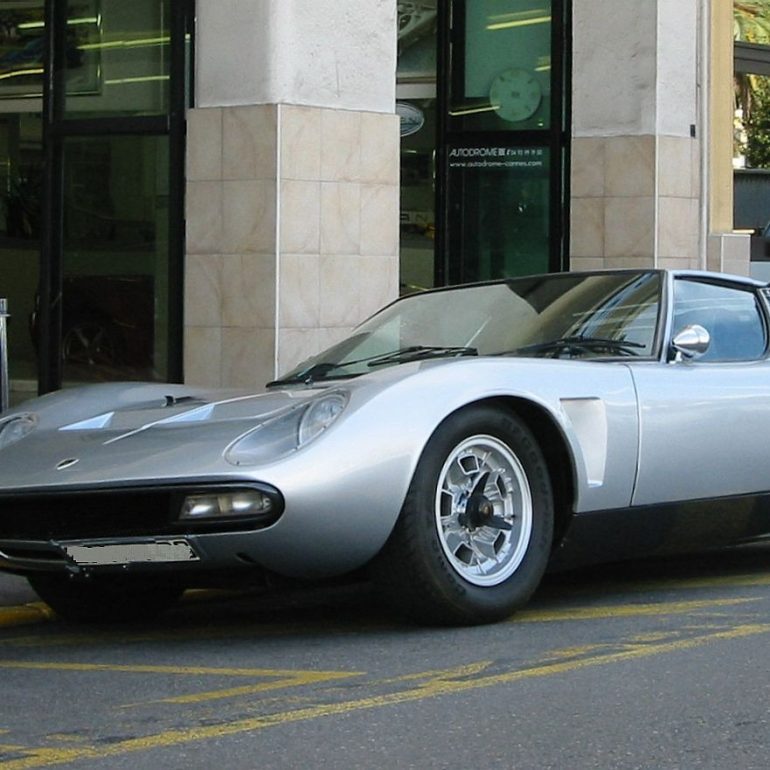
Lamborghini Miura SVJ Spider
Years: 1981
Units: 1
Engine: 3.9 L Nat Aspirated V12
Power: 440 hp @ 8,500 rpm
Torque: 296 lb-ft @ 6,500 rpm
0-60 mph: 3.6 seconds
Top Speed: N/A
This one-off example of the Miura was displayed at the 1981 Geneva Motor Show alongside other new Lamborghini models (Jalpa and LM002) shortly after new company CEO Patrick Mimran took over the factory although it was never factory authorized as a model. Finished in pearl white, the SVJ Spider was the formerly yellow Miura S presented at the 1971 Geneva Motor Show, and uses chassis #4808. Equipped with wide wheels and a rear wing reflecting the marque's revival, it was wrongly considered by some as a prototype for a possible limited series of Miura Spider whereas in fact it was simply a one-off show car constructed on behalf of the Swiss Lamborghini importer Lambo-Motor AG. It has since been sold a number of times to collectors.
Lamborghini Miura Specs & Performance
A summary of production Miura specifications and performance numbers.
You are trying to load a table of an unknown type. Probably you did not activate the addon which is required to use this table type.
Our Favorite Lamborghini Miura Images
"The Miura is what supercars are all about: a breathtaking shape clothing a mechanical fury.”
L.J.K Setright (Automotive Journalist)


